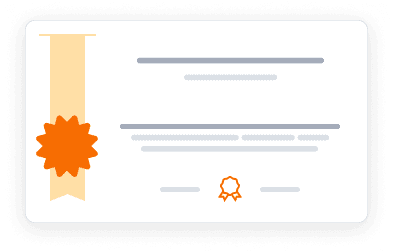This course is part of SAS Statistical Business Analyst Professional Certificate.
This intermediate course teaches statistical analysis using SAS/STAT software, focusing on key regression modeling techniques and their practical applications. Students learn a comprehensive approach to building, validating, and applying statistical models for both inference and prediction. The curriculum begins with model building strategies, covering stepwise selection methods and information criteria for identifying optimal predictors. Students then explore model post-fitting procedures to verify assumptions, diagnose problems, and handle influential observations and collinearity in linear regression. The course transitions from inferential statistics to predictive modeling, teaching honest assessment methods and deployment techniques for scoring new data. Finally, students learn about categorical data analysis, including association tests and logistic regression for binary outcomes. Throughout the course, practical examples using real housing data provide hands-on experience with SAS tools such as PROC REG, PROC GLMSELECT, PROC LOGISTIC, and PROC PLM.
4.7
(52 ratings)
7,965 already enrolled
Instructors:
English
Deutsch, हिन्दी, پښتو, 24 more
What you'll learn
Apply model selection techniques to identify optimal predictors
Verify regression assumptions and diagnose problems using residual plots
Identify outliers and influential observations in statistical models
Diagnose and address collinearity issues in regression analysis
Build predictive models and assess their performance
Deploy models to score new data using appropriate procedures
Skills you'll gain
This course includes:
3.05 Hours PreRecorded video
33 assignments
Access on Mobile, Desktop, Tablet
FullTime access
Shareable certificate
Closed caption
Top companies offer this course to their employees
Top companies provide this course to enhance their employees' skills, ensuring they excel in handling complex projects and drive organizational success.





There are 5 modules in this course
This course provides a comprehensive introduction to regression modeling using SAS software. Students begin by exploring model building strategies and effect selection techniques, learning to use information criteria and stepwise methods to identify optimal predictors in regression models. The second module focuses on model validation and diagnostics, teaching students to verify assumptions, examine residuals, identify outliers and influential observations, and diagnose collinearity issues. The third module transitions from inferential statistics to predictive modeling, covering model assessment, selection, and deployment for scoring new data. The final module explores categorical data analysis, including association tests between variables and logistic regression modeling for binary outcomes. Throughout the course, students gain hands-on experience with SAS procedures like PROC REG, PROC GLMSELECT, PROC LOGISTIC, and PROC PLM, using real-world housing data to apply statistical concepts in practical scenarios.
Course Overview (Review from Introduction to Statistics: Hypothesis Testing)
Module 1 · 1 Hours to complete
Model Building and Effect Selection
Module 2 · 1 Hours to complete
Model Post-Fitting for Inference
Module 3 · 2 Hours to complete
Model Building for Scoring and Prediction
Module 4 · 1 Hours to complete
Categorical Data Analysis
Module 5 · 4 Hours to complete
Fee Structure
Individual course purchase is not available - to enroll in this course with a certificate, you need to purchase the complete Professional Certificate Course. For enrollment and detailed fee structure, visit the following: SAS Statistical Business Analyst Professional Certificate
Instructor
Statistical Forecasting Expert and Programming Education Innovator
Dr. Jordan Bakerman serves as an Analytical Training Consultant at SAS, where he specializes in bridging open-source and SAS analytics platforms. His Ph.D. research at North Carolina State University focused on leveraging social media data to forecast real-world events, including civil unrest and influenza rates. As the creator of the widely-used "SAS Programming for R Users" course, he developed an innovative cookbook-style approach to help R programmers transition efficiently to SAS. His teaching portfolio includes courses on statistical analysis, regression modeling, and API integration between SAS Viya and open-source platforms. Through his Coursera courses "Introduction to Statistical Analysis: Hypothesis Testing," "Regression Modeling Fundamentals," and "Using SAS Viya REST APIs with Python and R," he shares his expertise in statistical programming and analysis. His work focuses on making advanced statistical concepts accessible while helping professionals integrate open-source tools with SAS technologies.
Testimonials
Testimonials and success stories are a testament to the quality of this program and its impact on your career and learning journey. Be the first to help others make an informed decision by sharing your review of the course.
Frequently asked questions
Below are some of the most commonly asked questions about this course. We aim to provide clear and concise answers to help you better understand the course content, structure, and any other relevant information. If you have any additional questions or if your question is not listed here, please don't hesitate to reach out to our support team for further assistance.




